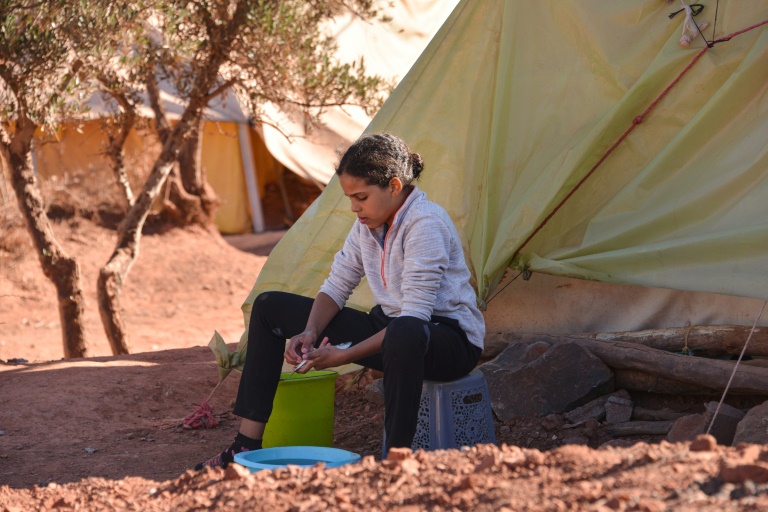Three months after quake, Morocco villages face winter chill

The slow pace of reconstruction has spurred concerns in a Moroccan region where poverty was high even before the devastating September quake
Ouirgane – Temporary camps set up following a deadly earthquake in southern Morocco three months ago are starting to look worryingly permanent as sub-zero winter temperatures hit the mountainous region.
Almost 3,000 died and more than two million people suffered damage to their homes when a 6.8-magnitude earthquake struck Morocco on September 8.
Imzilne, a hamlet of 250 residents some 60 kilometres (35 miles) south of Marrakesh was partly destroyed, killing three and forcing many into temporary camps.
The locals are making the most of the situation, turning stopgap shelters into communal living spaces where they can prepare bread, share duties and have meals together. An electrician has connected the camp into the village’s network, and a plumber has installed running water.
This way everyone can “live in good conditions” and no one has to “remain in their own corner,” Taoufiq Jaidi, a camp coordinator, told AFP.
Donors from both the private and public sectors provided equipment including portable toilets and showers equipped with gas water heaters, which are proving vital as winter arrives.
Located 1,000 metres (3,280 feet) above sea level, temperatures waver around zero degrees here.
But many are worried about the slow pace of reconstruction in this region where poverty was close to double the national rate before the quake. More than 60,000 homes in the High Atlas range and surrounding areas were damaged.
The government announced an emergency aid budget of 11 billion euros, but “some have received it, others not yet,” said Jaidi.
“We think about it every day,” said resident Malika Abbenay of the cold, as she stood between tents covered with plastic sheeting. “The last time it rained, it was hard to manage.”
– ‘It will last’ –
Another camp was set up nearby for the 600 inhabitants of El Bour village, which lost 40 people and 90 percent of its houses to the quake, according to a community activist.
Omar Biddar, 71, stood outside his tent.
“Life in a tent is not easy, and I have a feeling it will last,” he told AFP.
Biddar receives monthly aid from the state, and was also given just over 1,800 euros to help rebuild.
But he said he was still waiting for a permit to do the reconstruction, and didn’t know why it was taking so long.
A few families from El Bour have moved into converted containers.
“It’s still better than a tent, but I want to go back home,” said Kalthoum Boussaboun, 60, who cares for two grandchildren after their mother died in the quake.
The government says nearly 24,000 victims had received financial aid by mid-November and more than 3,300 requests for reconstruction aid were approved.
In the meantime, the villagers do what they can to cheer themselves up.
In late November, Imzilne celebrated a wedding that had been postponed because of the quake.
“Life goes on despite everything,” said Latifa Amzil, the 24-year-old newlywed. “We spent three months under intense stress. My wedding was a moment of joy.”
As she spoke, a pregnant woman emerged from her tent, prompting a playful comment from a neighbour: “And soon we will celebrate a birth!”
